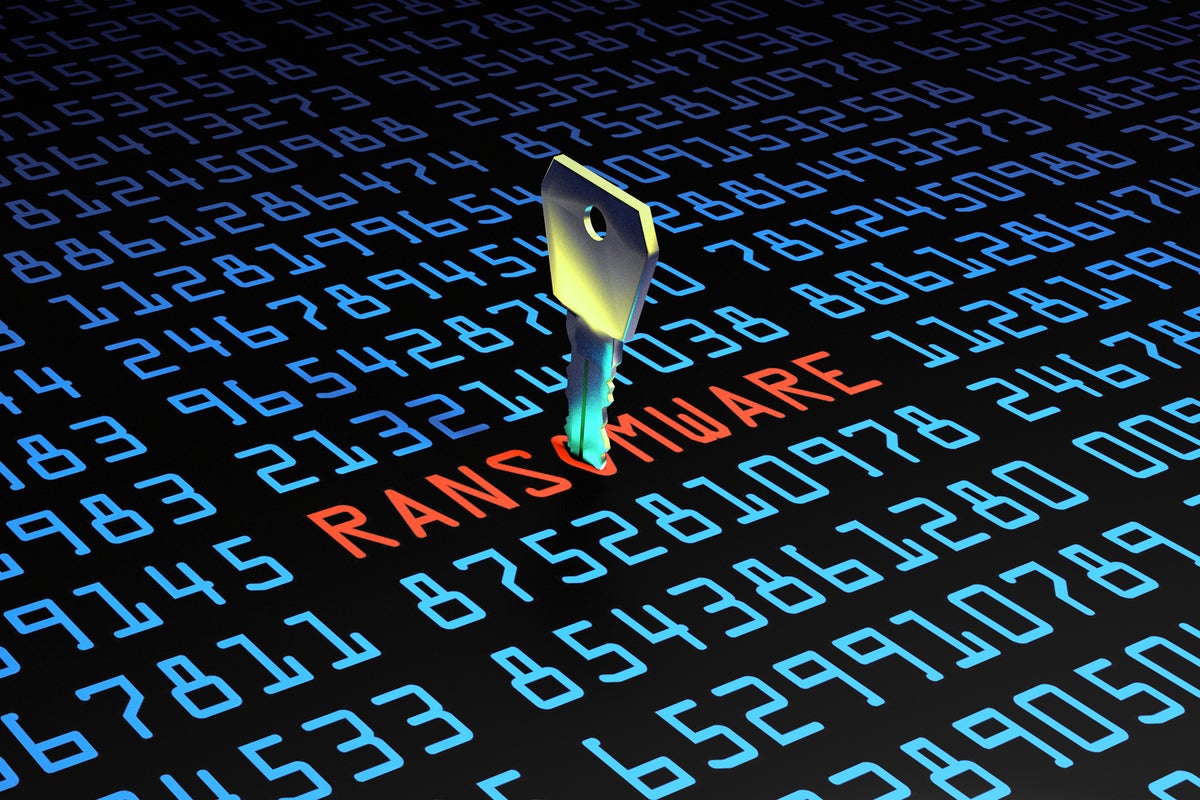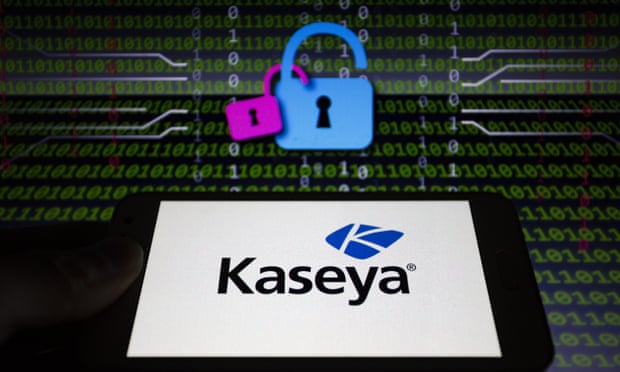How quantum networking could transform the internet

If QC comes to full fruition (an event that is far from certain), conceivably,
anyone with access to a quantum computer could decrypt a strongly encrypted
communication in mere minutes. Who has access to a quantum computer? Would you
believe you do? QC's first practitioners are making quantum systems available
for programming by registered experimenters and researchers, no credentials
required, in many cases for free. It's not easy, by any means, nor does it make
much sense to rational people, but QC service (such as it is) is operational. If
QN comes to full fruition (see above), some means of securing communications
will become feasible again. But because of the physics principle, QN would
leverage any "back door," such as some government agencies would ask network
equipment makers to include, would be entirely impossible to engineer. What we
have here, to paraphrase Strother Martin, is an open, collaborative, academic
effort whose success would immediately trigger "failure to communicate" securely
by conventional means. The intellectual property value of any digital encryption
technology for classical systems would plummet like a spent fuel rod in a core
meltdown.
The Bank of the Future Will Have Data Vaults and Money Vaults
Our belief is that the banks of the future will not necessarily be seen as banks
or finance institutions. They will be seen more and more as data hubs or
ecosystems for a much broader set of industry verticals. Not only will they
provide better financial products and more relevant financial products
consumers, but they will be in a perfect position to leverage data to form data
alliances and data partnerships with other members of the ecosystem, such as
grocery stores, airlines, energy companies, etc. And, it will be up to the user
if they are willing to share their information or not. If they share, they will
receive benefits and services from members of these alliances, which are
complementary businesses that are sharing data based on the consent of the user
to receive better, more relevant and higher impact service. ... There are a
number of interesting interaction layers that enable banks to interact with
their customers better. These could be conversational interfaces, like we have
seen with chatbots. There are also voice assistants, like Google Home and
Alexa.
Ransomware recovery: Plan for it now

A big ransomware attack is not the time to go it alone. There are resources
available that will assist you halting and recovering when it feels like all
hell is breaking loose, and there are steps to take that might help authorities
catch the criminals. Part of your ransomware-response plan should include the
contact information of these resources. If you have a cyber-insurance policy, it
can be very helpful. It can put you in touch with specialists to help guide you
through your response. Contact them now, before you are attacked, to establish
their response process and document it in your plan. If you don’thave such a
policy, consider getting one. You should also immediately contact the local
field office of the FBI. Its level of involvement in a particular case will be
driven by the extent and nature of the attack, but it says that notifying them
of all attacks helps them to better respond to ransomware in general. They also
have access to tools and resources unavailable to many other organizations that
can help especially if it identifies another country as the source. When
reaching out for help, beware companies that claim to decrypt the data for
you.
Applying Lean Tools and Techniques to Scrum
Scrum teams are beginning to discover that Scrum as a framework can in fact be
defined as wasteful. That waste is often masked by in-person interactions, which
Scrum has always advocated for. While Scrum pairs well with other Agile
frameworks and approaches, Lean, an approach which focuses on waste reduction,
is rarely paired with Scrum for this to become visible. This has led to a lack
of awareness or focus on the elements of waste that exist. The movement to
remote work has brought a lot of changes outside of how a team operates to
contend with. You have subpar facilities compared to an office. From simple lack
of space, with some friends of mine working off of a kitchen table for over a
year now, to not having appropriate ergonomic equipment at home to handle a
40-hour week. That’s before the added strain of other people or families in the
house; in my case, I have a 2.5-year-old, an 18-month-old, and a newborn which
brings an added dimension to the day! So off the bat, the environment changes
are difficult to handle, but when you keep following Scrum as per the Scrum
guide, you see a magnification of the issues which I am attributing to waste.
The mirrored world: What are the benefits of digital twins?

Intelligent twins have the power to turn data into actionable, big-picture
insights, but only if fueled by complete and accurate data. COVID-19 revealed
that enterprises cannot rely on historic data blindly -- they need to check and
correct their models as the world changes. This approach requires a strategy for
real-time data analytics that includes provisions for both IoT devices and
sensors, and tools for data analysis and utilization. When this is achieved,
enterprises can unlock a new way of understanding the business, and a new way of
running it. Take Ericsson and Vodafone as examples. The two companies are
working with e.GO, an electric vehicle manufacturer, to develop a factory of the
future. In the factory, machines connect over a 5G network, sending data to a
network operations center that powers a digital twin of the factory. The twin is
then used to enable just-in-time processes and smart tools that empower human
workers with data-driven intelligence. Intelligent twins have powerful
simulation capabilities and, with your data foundation in place, they will let
you reimagine the innovation process.
Three security lessons from a year of crisis

In the early days of the pandemic, when lockdowns and restrictions across the
United States were at their height, contact centers and customer service teams
saw huge spikes in call volume. Banks’ phones rang off the hook with questions
about account numbers and Paycheck Protection Plan loans, about unemployment
payments and mortgage suspensions. Business dealings that could once be
conducted face-to-face with a teller in a branch office now moved onto the
phone. Contact agents not deemed “essential” pivoted to working from home; new
systems had to be devised, implemented, and tested almost overnight. The result?
More calls, longer hold times, and longer agent conversations. Of course, not
every fraudulent use of a contact center requires speaking with another human
being: unscrupulous users can “mine” interactive voice response systems for
personal data. In some industries, the second quarter of 2020 saw an 800%
increase in year-over-year call volume. Such elevated numbers weren’t
sustainable, and there’s been some drop-off in call length and volume, but in
the last quarter of 2020, call durations were still up 14% compared to pre-COVID
levels, and typical waits were 11 minutes longer than they were before the
pandemic.
Who’s behind the Kaseya ransomware attack – and why is it so dangerous?

Hackers infiltrated Kaseya, accessed its customers’ data, and demanded ransom
for the data’s return. Making the hack particularly grave, experts say, is
that Kaseya is what is known as a “managed service provider”. That means its
systems are used by companies too small or modestly resourced to have their
own tech departments. Kaseya regularly pushes out updates to its customers
meant to ensure the security of their systems. But in this case, those safety
features were subverted to push out malicious software to customers’ systems.
This hack was particularly egregious because the bad actors behind it had
targeted the very systems typically used to protect customers from malicious
software, said Doug Schmidt, a professor of computer science at Vanderbilt
University. “This is very scary for a lot of reasons – it’s a totally
different type of attack than what we have seen before,” Schmidt said. “If you
can attack someone through a trusted channel, it’s incredibly pervasive – it’s
going to ricochet way beyond the wildest dreams of the perpetrator.” Kaseya
has said that between 800 and 1,500 businesses were affected by the hack,
although independent researchers have pegged the figure at closer to 2,000.
Ransomware gangs seek people skills for negotiations

People with the appropriate – and not necessarily technical – skillsets to
succeed in ransom negotiations are particularly valued, Kela found. “We
observed multiple posts [on the dark web] describing a new role in the
ransomware ecosystem, negotiators, whose purpose is to force the victim to pay
a ransom using insider information and threats,” said Kivilevich. “Victims
started using negotiators – while a few years ago there was no such
profession, now there is a demand for negotiating services.
Ransomware-negotiation specialists partner with the insurance companies and
have no lack of clients. Ransom actors had to up their game as well, in order
to make good margins. “As most ransom actors probably are not native English
speakers, more delicate negotiations – specifically around very high budgets
and surrounding complex business situations – required better English. When
REvil’s representative was looking for a ‘support’ member of the team to hold
negotiations, they specifically mentioned ‘conversational English’ as one of
the demands. This is not a new case: actors are interested in native English
speakers to use for spear-phishing campaigns.”
Facebook Launches Open Source Simulation Platform Habitat 2.0
Habitat 2.0 prioritises speed and performance over a wide range of simulation
capabilities and allows researchers to test new approaches and iterate more
effectively. For example, the researchers have used a navigation mesh to move
the robot instead of simulating wheel-ground contact. However, the platform
does not support non-rigid dynamics such as liquids, films, clothes, and
ropes, as well as tactile sensing or audio. This, in a way, makes the Habitat
2.0 simulator two orders of magnitude faster than most 3D simulators available
to academics and industry professionals. With these capabilities, researchers
can now use the platform to perform complex tasks, such as clearing up the
kitchen or setting the table. For instance, the platform can simulate a Fetch
robot interacting in ReplicaCAD (a 3D dataset) scenes at 1,200 SPS (steps per
second) while the existing platform runs at 10 to 400 SPS. It also scales
well, achieving 8,200 SPS (273x real-time) multi-process on a single GPU and
nearly 26,000 SPS (850x real-time) on a single node with 8 GPUs. Facebook
researchers said such speeds significantly cut down on experimentation time,
from six months to as little as two days.
The post-pandemic office: how to prevent burnout

The burnout we’re seeing now is as unique as the year we’ve just lived
through, and there are several contributing factors. According to the Flex
Study, almost a quarter of employees found themselves working longer hours
while remote. Work often brought a welcome sense of normality, and provided
distraction for those lucky enough to continue working, but the longer hours
took a toll on many employees. As many as 37% of employees admitted to not
taking a break of at least 30 minutes during their average work-from-home day.
Burnout can stem from an inability to disconnect too, with 60% of UK
respondents stating they are unable to switch off from work. Of those, 23% are
anxious about getting caught up on work, 22% are distracted and still looking
at their phone and 15% feel a sense of guilt. As businesses decide how they
will work in the future, they will also need to address video fatigue as
another root cause of burnout. Video calls have been the main tool for
engaging with colleagues and customers over the past year, and many find this
mentally exhausting. To create a more balanced schedule, businesses must set
clear expectations about which meetings should be conducted via video, and
which meetings can be audio only, as well as promoting meeting-free days
altogether.
Quote for the day:
"Most of the successful people I've
known are the ones who do more listening than talking." --
Bernard Baruch
No comments:
Post a Comment